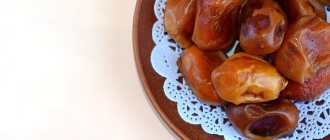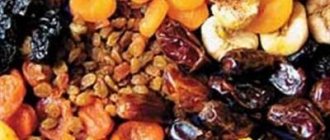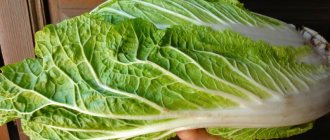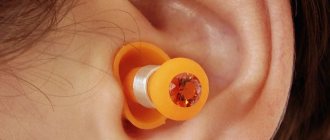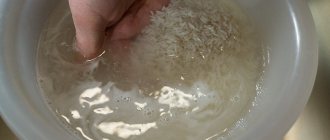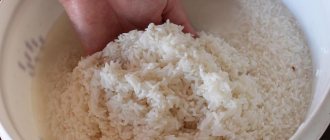How often do you wash dried fruits brought from the store? There are people who seriously don’t even understand why they need to be washed. This is the wrong approach. And some, concerned about the safety of their body, simply rinse them under running water. You can't do that either.
Let's talk about what needs to be done with dried fruits brought from the store so that they enter the stomach, being as safe as possible for health, and so that all the beneficial substances contained inside (and there are a lot of them) are well absorbed by the body.
Two reasons why you need to wash dried fruits
The first reason is simple and probably understandable to many. No one knows what conditions dried fruits were in before they reached your table. Perhaps the dried half of a prune ended up on the floor somewhere, and an unscrupulous seller returned it to the general box? Or, for example, did someone take the fruits with their hands without gloves? It’s already clear that dried fruits need to be washed.
The second reason is known to those who understand at least a little about the production technology of this product. It is important to understand that store-bought dried fruits are not homemade ones that have been dried in the sun. To ensure a beautiful appearance and a long shelf life, the fruits are treated with preservatives (benzoate and potassium sorbate, as well as sulfur dioxide). These substances do not pose any particular harm to the human body, but before consuming the treat, it is still better to process it correctly.
So how to properly wash dried fruits? It is worth noting that each type requires a special approach. Let's figure out what it should be like.
By date of birth, you can calculate the optimal interior color for everyone
Miracle or legend: Samara local historians conducted an investigation into “Zoya’s Standing”
They have money and power: types of men prone to cheating in relationships
How to soak dried fruits in alcohol for baking? ⇑
Dried fruits soaked in alcohol acquire a wonderful aroma and taste. Remember also that sugar and alcohol act as preservatives - thanks to them, for example, ready-made Christmas cupcakes are stored much longer. Let's look at the intricacies of soaking dry fruits in alcohol.
- Any dried fruit will do, however, it is recommended to divide them into light and dark.
Note to the housewife: You can soak dried apricots, light raisins, figs, bright dried fruits in one container, but separately from dark raisins, prunes, dates and other similar dried fruits, which are better soaked in another container.
What is it for? The fact is that light dried fruits will lose their brightness when soaked together with dark ones. They will no longer look so appetizing and beautiful in finished baked goods.
- Large dried fruits are usually chopped to the size of raisins (so that they are all about the same size), and the easiest way to do this is with kitchen scissors. Although, of course, this can be done with a knife on a board, but it is more difficult, because... dried fruits can stick to both the board and the knife.
- You can add spices to the soaked dried fruits to suit your taste.
Traditionally, Christmas baking uses: cinnamon, ginger, nutmeg, cloves, cardamom, citrus zest, sometimes black pepper and coriander.
- What alcohol should I use to soak dried fruits? Suitable: cognac, rum, liqueurs, brandy, fortified wine (for example, sherry).
Remember: It is better to separate alcohol into light and dark, for the same reasons as the dried fruits themselves. Soak light dried fruits in light alcohol, and dark ones in dark alcohol.
Tip: Try using a mixture of 3-4 drinks for complex flavors and aroma.
- You should allocate a lot of time for soaking dried fruits - from two days to a couple of months.
Why soak dried fruits in alcohol for a long time? This is necessary for the maceration process - highlighting the special taste and aromatic qualities of the alcohol you choose. You not only allow dried fruit to absorb, for example, cognac, but also the opportunity for the drink to fully reveal its flavor and aromatic qualities.
Christmas cake with dried fruits and nuts How to soak dried fruits in alcohol? It's simple - mix dried fruits with your chosen drink and spices, leave in a clean jar and stir for the first few days.
Tip: The dried fruit mixture with sugar and alcohol will keep for months, so you can prepare it ahead of time in anticipation of the holidays (remember that sugar and alcohol serve as preservatives).
Remember: To prepare Christmas baking, it is important to take care of preparing dried fruits in advance, because only then, by adding them, for example, to a cupcake, will you achieve a truly wonderful result - a unique bright taste and aroma.
- But what to do if you didn’t take care of soaking dried fruits in advance or simply don’t have time? Express soaking method: Boil dried fruits with your alcohol of choice for 15 minutes and leave for at least an hour and a half.
Raisin
To prevent raisins from crunching on your teeth, they must be cleaned of stems and foreign debris before eating. Just washing dried grapes is not enough - a whole technology must be followed.
First of all, place the raisins in a colander and rinse them thoroughly under hot running water, thoroughly “massaging” the berries. This way you will remove small impurities, dirt and wash away dust.
The further course of action is soaking the raisins, but to what extent depends on their freshness. If the berries are soft, then 10-20 minutes will be enough, if they are hard and wrinkled, then you will have to leave them in hot water (50-60 degrees) for 3-4 hours (or even better, overnight). By the way, some housewives steam very hard raisins in a double boiler - they do the right thing, while saving time that they could spend on soaking for many hours.
The soaked raisins need to be washed again, and then laid out on a clean, dry towel and allowed to dry.
How to steam dried fruits? ⇑
Of course, you want to add tasty, juicy and soft dried fruits to your dishes. But how can you achieve this if you come across completely dry ones? Let's look at several possible ways to soften dried apricots, prunes, raisins and other dried fruits for your favorite salads, meat dishes and baked goods.
3.1. In the microwave
Prepare cling film, as well as water and the dried fruits themselves in a ratio of 3 to 1 (for example, 300 ml of water per 100 grams of dried fruits). Of course, you will need a microwave-safe container (glass, porcelain, ceramic, silicone, plastic). Pour the washed dried fruits into containers with water and cover with cling film. Cook for 3 minutes (approximately 800 W power).
Remember: Everyone's technique is different, you may need more or less cooking time depending on the power of your microwave and the volume of dried fruits you plan to steam.
Tip: When removing the container from the microwave, remember that it may be very hot.
After cooling, drain the water and use the prepared soft, steamed dried fruits in dishes.
3.2. In a saucepan
To steam in a saucepan, preheat the water on the stove (it should be hot, but not boiling, and there should be enough water to cover the dried fruit). After adding the washed dried fruits to the hot water, cover the pan with a lid and bring the mixture to a boil. Leave to cool completely and drain off excess liquid.
3.3. In a steamer
You can use a double boiler or a slow cooker with the ability to steam. Place the washed dried fruits in a bowl and steam them for 10 minutes.
3.4. Using boiling water
Dried fruit compote in a saucepan There is an easier way - using boiling water. Pour boiling water over the dried fruits and cover with a lid. Leave for 10 minutes and drain off excess water.
Important: Regardless of the method you choose, you may need more time if your dried fruit is particularly hard. Check them before draining or removing from the steamer bowl.
You can also make a delicious compote from hard dried fruits! If you're wondering how to make this, check out the recipe on our website.
Prunes
In order for prunes to become as beneficial as possible for the body and especially for the intestines, before eating they must be soaked in cool water for half an hour. After this time, the liquid must be drained and the dried fruits rinsed under hot running water.
“Coronavirus” benefits that will be canceled in the Russian Federation on April 1 have been named
The developer of CoviVac confirmed the possibility of revaccination with the drug
Restore blood vessels after coronavirus: recommendations from a therapist
However, please note that this processing method is only suitable for prunes intended for fresh consumption (for example, to add to a salad).
If in the future the fruits will be used for cooking compote or baking, then it is better to treat it with boiling water (but also after soaking).
How to store dried fruits? ⇑
How to properly store dried apricots, prunes, dates, raisins and other dried fruits, keeping them healthy and tasty?
- Moisture and heat are the main enemies of dried fruits.
You may not know this, but it is believed that dried fruits are best stored at a temperature no higher than 10°C. Due to the high humidity in the refrigerator, you can use special compartments for fruits (by placing the dried fruits themselves in an airtight container). Or even store dried fruits in a cool cupboard or pantry.
- It will be better to store different types of dried fruits separately from each other, because... they vary in moisture content (wet dried fruits will spoil drier ones).
- If you washed dried fruits in advance, do not forget to dry them (first at room temperature, and then at low temperature in the oven). Otherwise, mold may occur.
- Remember the expiration date - approximately a year from the date of purchase (if you bought it in bulk) and check dried fruits before adding them to dishes for spoilage.
Dried apricots
Dried apricots, like prunes, should be soaked in cold water for 30-40 minutes before washing and rinsed under running water. And after all this, it is better to steam it (place the dried apricots in a colander and place it over a pan of boiling water).
With this processing, the maximum amount of vitamins is preserved, but all pathogenic microorganisms settled on dried apricots are effectively destroyed.
Choose the right apricot
For my compote, I take dried apricots, or rather dried apricots. You need to choose the right apricots, minimally processed, otherwise, instead of benefiting from the compote, you will get harm. Ideally, apricots should be dry, wrinkled, brown, inconspicuous, with or without a pit.
This is what it usually looks like:
Remember: dried apricots are almost always fumigated with sulfur dioxide (sulfur dioxide, sulfur dioxide, SO2, another name is additive E220) so that insects do not eat it and bacteria do not multiply in it.
I have always been amazed by dried apricots and prunes on the shelves: how can a dried apricot or plum be soft? How do they even get to us without worms and mold? There is only one answer - chemical treatment.
Therefore, we take only dried apricots, dark brown in color with a pit.
Dates
Dates are very capricious, so you can’t keep them in water for a long time - the skin will crack and the flesh will “spread out”. We act very quickly.
First of all, we wash the dates under running water at room temperature (preferably in a colander), placing them in small portions in a bowl. After washing, let the fruits dry on a clean towel. If you come across very old, hard dates, you can soak them in water at room temperature, but not for long - a maximum of 15 minutes.
Be sure to pay attention to the color of the water flowing from the dates: if it has a bluish tint, refuse to eat the treat - it has been treated with dyes or fungicides. Both will definitely not benefit the body.
Properly soaked dried fruits are very easily absorbed by the intestines, thanks to which they saturate the body with a huge amount of vitamins and beneficial microelements.
Found a violation? Report content
Some useful tips
The following recommendations will help determine whether store-bought dried fruits are safe to eat:
- If, during soaking, an oily film forms on the surface of the water, this indicates the use of glycerin or oil during the processing process. Such components are not dangerous.
- If the liquid turns a little blue when washing dried fruits, this is a rather dangerous sign. Often, a change in the color of the water indicates the use of toxic chemicals and pesticides during fruit growing. It is best to avoid using such a product altogether.
How to properly wash dried apricots so that nothing harmful remains in them
And what can be dangerous about unwashed dried fruits?
Dried fruits are a controversial product: healthy and at the same time dangerous. The benefits are due to its plant origin. For example, dried apricots are pitted and dried apricots, and prunes are sun-dried plums. During the drying process, fruits lose water and significantly decrease in volume. At the same time, vitamins are destroyed in them, but sugars and microelements are preserved.
In terms of sugar content, one small dried apricot is identical to a large ripe apricot. But we can eat a lot of dried slices, a whole handful, while we can eat two or three apricots, and we’re full. That is why dried fruits are an insidious product. They are very high in calories and consuming them in large quantities invariably leads to weight gain.
Dried apricots contain a lot of sugars, which is why they are very high in calories (Pixabay.com)
Dried apricots retain potassium, phosphorus, calcium, and iron.
It is recommended for people suffering from diseases of the cardiovascular system as a source of essential microelements.
Also, due to its natural sweetness, dried apricots are an excellent substitute for industrial desserts and confectionery. By consuming it instead of sweets in small quantities, you will only benefit the body.
Dried apricots discord
But not every dried fruit will be useful. Take a closer look at what's on display. The first thing that catches your eye are the bright, beautiful orange slices, glistening appetizingly in the sun. The hand reaches out to them, but in vain.
Fruit dried naturally, without adding preservatives, cannot look so beautiful. Rich color and elasticity indicate that the workpiece was prepared using the sulfitation method. This is how the vast majority of dried fruits that reach the market are produced. Sulfitation allows you to preserve the presentation of the product, increase its shelf life and make it more attractive to the buyer.
This is what dried apricots treated with sulfur oxide look like (Naturovoexpress.ru)
During the sulfitation process, dried apricots are treated with sulfur oxide. The substance kills microorganisms and makes dried fruit “sterile”. Sulfur covers each fruit with a thin, imperceptible film and remains on it for a very long time.
Dried fruits not treated with sulfur oxide look different. They are wrinkled, dark, and cost 30 percent more than their “chemical” counterparts. It is not surprising that buyers are least interested in such products.
And this is real Uzbek dried apricots, dried in the shade without chemicals (Cstor.nn2.ru)
Dangerous peel
In addition to sulfur oxide, the product can be treated with other substances:
- liquid smoke;
- glycerin;
- dyes.
All substances pose a danger to the body. Sulfur oxide (E220) is toxic, causing severe poisoning in large doses, and a powerful allergen in small doses. Liquid smoke, which is used to achieve the appearance of sun-dried dried apricots with uneven skin color, is a carcinogen. Most often it is found in fruits harvested in Moldova, Poland and Iran, less often in Uzbekistan and Turkey.
Dark color is not a sign of environmental friendliness; liquid smoke may have been used in preparation (Fitorganic.net)
Dyes are needed to return the fruits to an attractive appearance, because during the drying process they naturally darken. And glycerin, which is often replaced with technical mineral oil, is designed to make the peel shiny, so that the product makes you want to buy it.
According to current phytosanitary standards, agricultural products infested with pests are prohibited from being imported into the territory of the Russian Federation. Unprocessed dried apricots are a risky product; insects may be found in them and not allowed to cross the border. Therefore, 98 percent of dried fruits imported from abroad are treated with sulfur oxide.
Preparation rules
To minimize risks to the body, buy and wash dried apricots correctly.
- Choose “more terrible” fruits. They are probably also treated with sulfur oxide, but the less of it on the surface, the easier it will be to wash off the toxic film.
- Soak in water at room temperature. The substance dissolves only in cool water. Pour the fruits into a container, pour in so that the water covers them two to three centimeters above, leave for 30 minutes. After this, rinse in running water.
- Do not wash in boiling water. Firstly, boiling water does not destroy the sulfur film, and secondly, after heat treatment, fewer useful substances remain in dried apricots.
Do not forget to process all dried fruits in this way, since the techniques for producing prunes, raisins, figs and other oriental delicacies are identical.
Source: https://ura-povara.ru/journal/kak-pravil-no-myt-kuragu-chtoby-v-nej-ne-ostalos-nichego-vrednogo/
Why wash and soak dried fruits?
After purchasing, many people have a well-founded question: do they need to wash dried fruits, and if so, how to wash them correctly?
To answer this question, let's first understand how dried fruits are produced and processed.
To turn fresh fruits into dried fruits, they must be subjected to a drying process. As a result, dull, wrinkled, dark and not very pleasant-looking fruits and berries are obtained. Therefore, after drying, they are further processed.
Processing is carried out to improve the appearance of the product. However, this is not the most important thing. The main purpose of processing is to prevent rotting and increase the shelf life of dried fruits.
For the production and processing of dried fruits: prunes, dried apples, raisins, dried apricots, etc. Various preservatives are used. For example, they can take sodium benzoate (E 211) or potassium sorbate (E 202). They kill yeast and molds.
